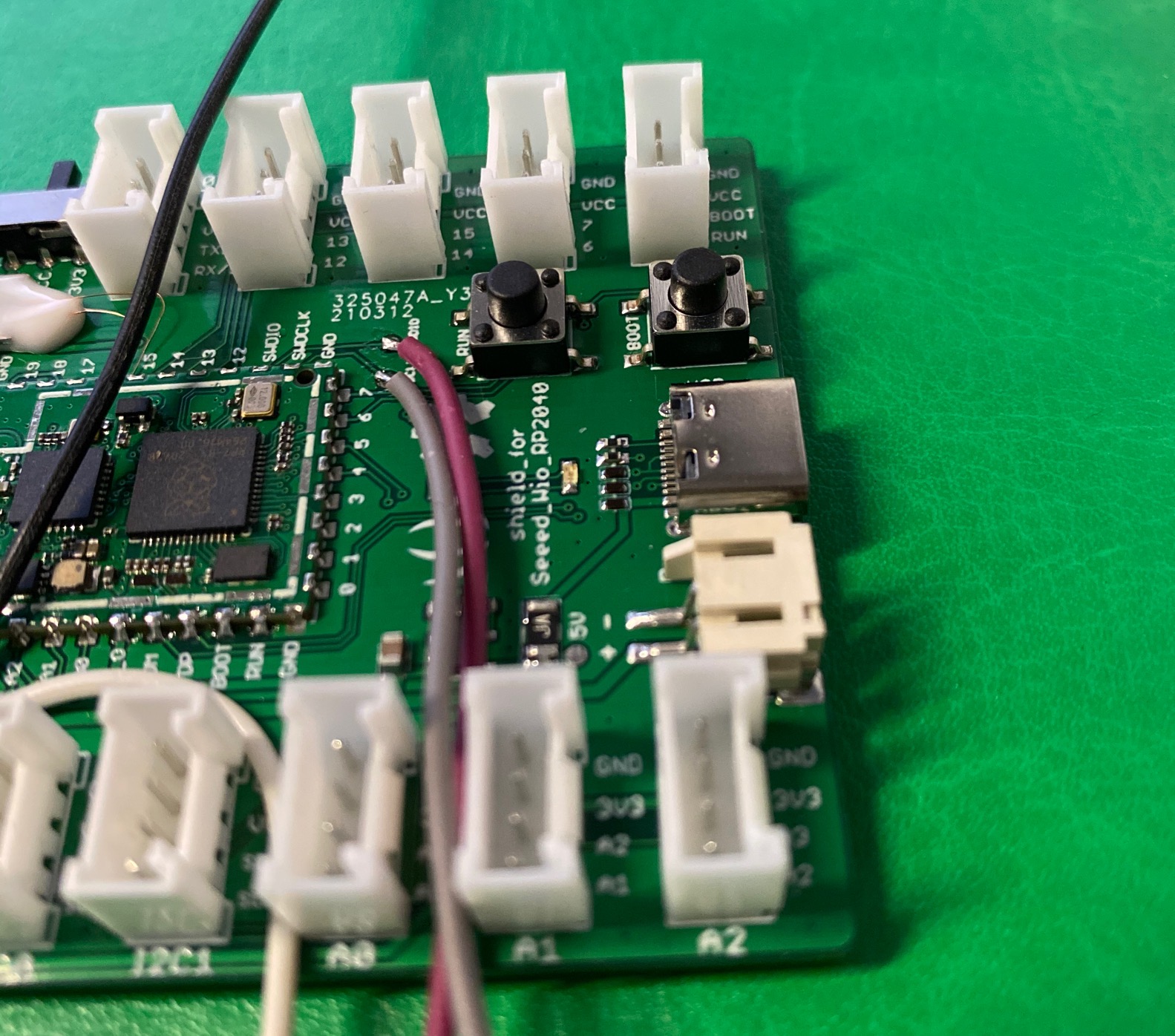Seeed Studio is no stranger to the Raspberry Pi RP2040 ‘Pi Silicon,’ but it has yet to produce its own board based on the surprisingly adaptable microcontroller. In a recent tweet, we can see a teaser for the company’s upcoming board, currently known as the “Shield for Seeed Wio RP2040,” that will feature wireless and a custom RP2040 board.
There will be the RP2040 wireless family series, also including DevKit. Let us know what is the most are you looking forward to! https://t.co/ytaxr6JdLGMarch 26, 2021
See more
We can see just a corner of the board, but we can glean some information on the features. We start with the RP2040, which is dead center of the board and appears to be soldered to the mainboard using castellations. We can see that this is the B1 variant of the RP2040 SoC, a refinement to the original B0 found on the first batch of Raspberry Pi Pico. Looking at the pinout of this chip, we note that it is not the same as the Raspberry Pi Pico, so this is a new RP2040 board and not just a Pico surface mounted to the board. The tweet refers to “the RP2040 wireless family series,” but there are no visible WiFi devices or chips visible in the image, so they remain a mystery for now.
Along the perimeter, we can see 10 Grove connectors used to break out the GPIO pins of the RP2040 for use with components in the Grove ecosystem, including those that use the I2C interface. We cannot see any other GPIO pins, so we assume this is similar to Seeed’s other Grove breakout board for the Pico. Two momentary switches marked BOOT and RUN handle readying the board for flashing a new UF2 image and resetting it.
A USB C port, used for data and power, is a nice addition. The USB C port is a solid and reliable choice, though it is a little more expensive than a micro USB port. Next to the USB C port is a two-pin JST connector that’s compatible with batteries, but we can’t see any charging circuits for lithium batteries. Finally, in the top left of the image, we can see a switch used to switch the power supplied to the Grove connectors from 3V to 5V.
The Shield for Seeed Wio RP2040 is still in development, evident by the “bodge wires” used to break out power and data connections to an unseen device.
